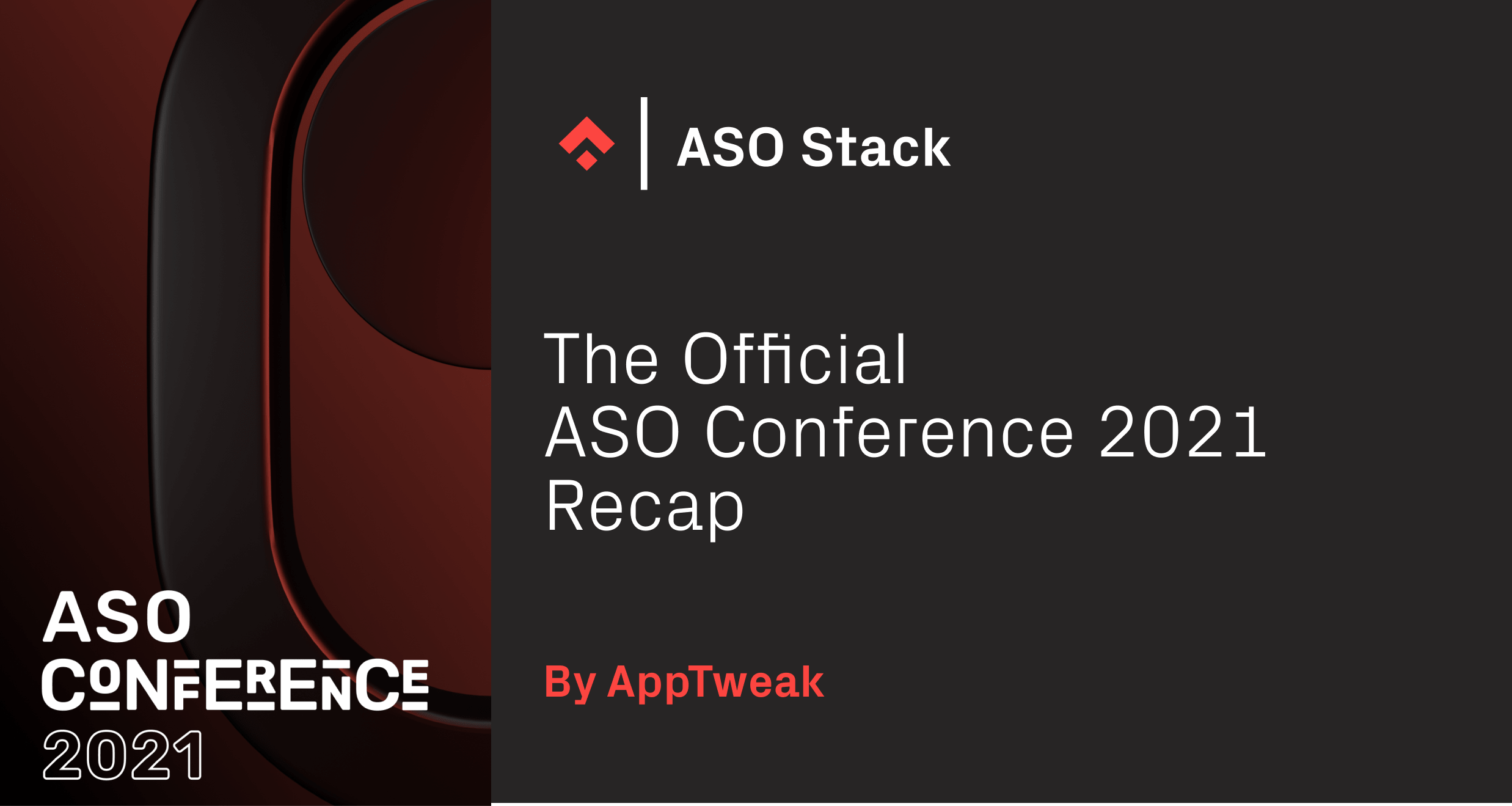 The ASO Conference 2021, co-hosted by Phiture and AppTweak, was held on June 3! The biggest ASO event of the summer returned to provide over 2000 attendees with expert insights from industry leaders and mobile innovators. Read on for a detailed recap of each talk and panel discussion.
The ASO Conference 2021, co-hosted by Phiture and AppTweak, was held on June 3! The biggest ASO event of the summer returned to provide over 2000 attendees with expert insights from industry leaders and mobile innovators. Read on for a detailed recap of each talk and panel discussion.
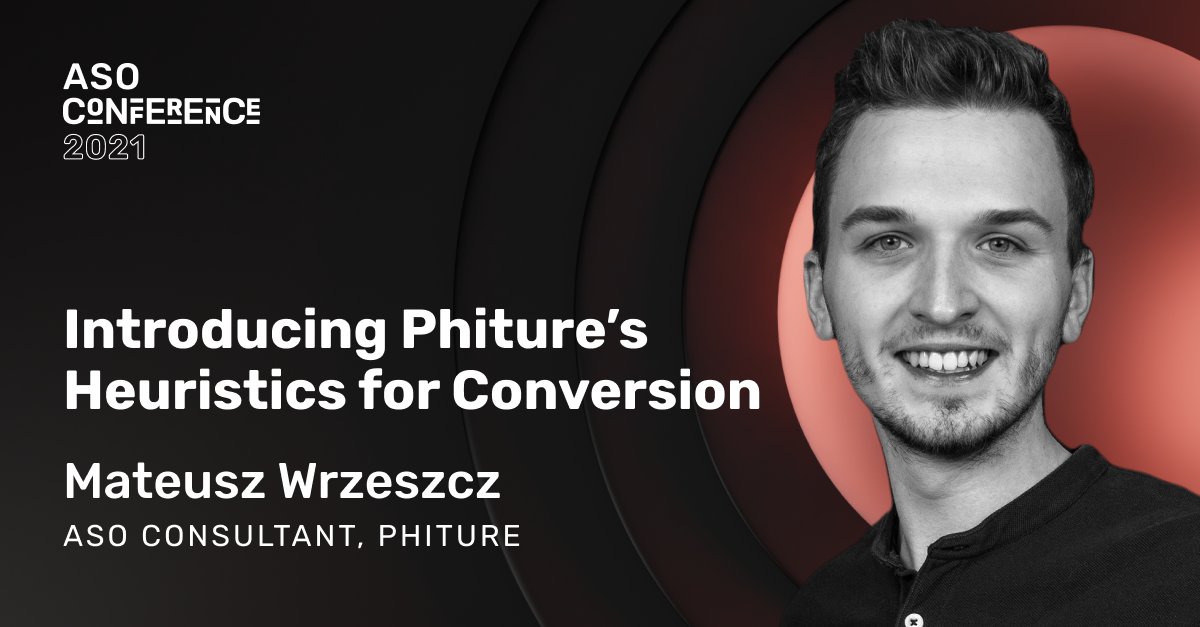 Introducing Phiture’s Heuristics for Conversion
Introducing Phiture’s Heuristics for Conversion
Mateusz Wrzeszcz (ASO Consultant, Phiture)
The conference began with a talk from Mateusz Wrzeszcz, ASO Consultant at Phiture. He discussed the team’s newly-developed Heuristics for Conversion, formulated to help evaluate your current store listing assets and prioritize experiments in your testing roadmap.
Mateusz began by stressing the importance of conversion in ASO; no matter where traffic originates, it has to go through your store listing page. A conversion project should always begin with conversion research: A/B tests help developers to understand user behaviors, but experiments only work if they stem from strong hypotheses. According to Mateusz, there are 4 main misconceptions of A/B tests:
- ‘A/B testing is free’: Even when you employ native A/B tests, time and effort are still needed for ideation, design, set-up, and analysis.
- ‘You should A/B test everything’: Not necessarily – the main goal of A/B tests is to get better understanding of your visitors’ preferences, so your tests should be prioritised and based on a strong hypothesis.
- ‘A/B testing is a one-fits-all solution’: A/B testing makes sense only when it’s valid. You need to have enough traffic in markets where you run experiments and have at least the basic understanding of statistics in order to properly manage experiments.
- ‘Google’s 90% confidence interval is strong enough’: There are numerous examples of getting inconsistent results from Google Play Experiments or illusive improvements in CR.
Before introducing the team’s Conversion Heuristics, the audience was reminded of Phiture’s Conversion Rate Optimization (CRO) framework that can help developers design and run better experiments:
- Conduct research
- Hypothesize (create your hypotheses and score them with the MECLABS Four-Step Hypothesis Framework)
- Prioritize
- Create assets
- Test assets
- Measure and report
Mateusz particularly drew the audience’s attention to the MECLABS Conversion Sequence Heuristic which states that conversion is dependent on: users’ motivation (which can be evaluated but not swayed); value proposition; anxiety; the presence of friction; and incentives (which can be used to offset friction). Phiture’s own Heuristics were inspired by Maslow’s Hierarchy of Needs. Its foundation starts with store guidelines and policies, then moves up to relevance and clarity, personalization, trust and security, and stimulants.
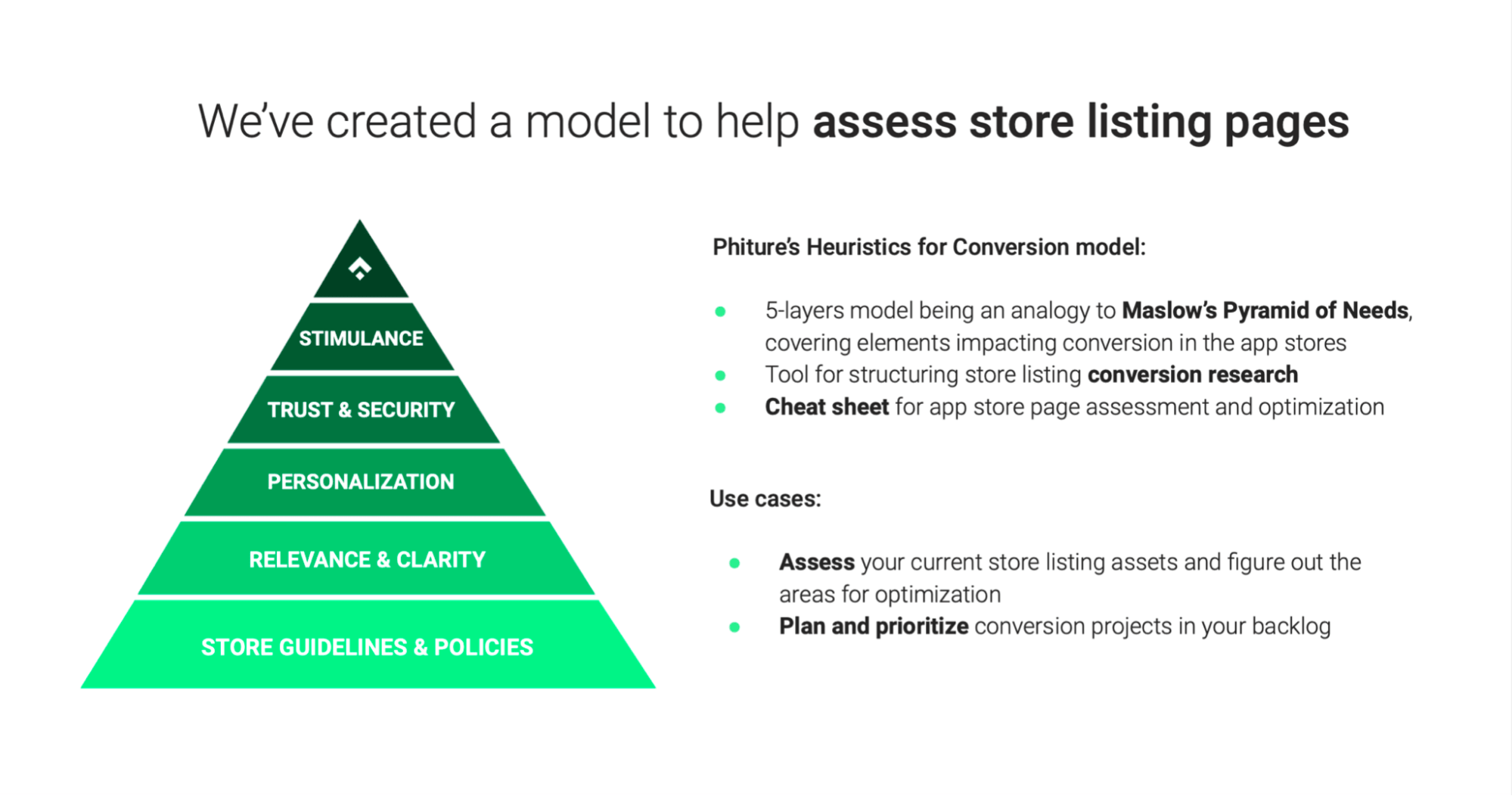 The lowest level is the foundation of conversion and reminds developers to continuously research store guidelines and policies. The stores regularly update rules and regulations, as demonstrated by recent policy changes on both the App Store and Google Play Store.
The lowest level is the foundation of conversion and reminds developers to continuously research store guidelines and policies. The stores regularly update rules and regulations, as demonstrated by recent policy changes on both the App Store and Google Play Store.
Moving up the pyramid, Mateusz described the elements that should be considered to ensure relevance and clarity:
- A clear value proposition: The less well-known your app is, the clearer your value proposition needs to be in your store listing.
- Relevant assets and metadata: It is important to target keywords that are very relevant to your app, even when their volumes are not the best or they are quite difficult to rank high for. Also, remember to account for any external factors that might affect your performance.
- The presentation of core features on your app page.
- Visual consistency: This is particularly important for paid traffic that benefits from consistent designs between ads and the store.
The next level to consider in conversion is personalization, which comprises:
- Localization: Establish your minimum viable translation and make sure your creatives include translated captions and local user interfaces.
- Culturalization: Add elements to your metadata that appeal to specific local markets.
- Storefront alignment: Establish separate strategies for each storefront and make sure to add relevant device mockups to your creatives.
- Persona-based content: Use imagery and content that resonates well with your target market.
Trust and security is the penultimate level of Phiture’s Heuristics for Conversion. To fulfill this stage, you should account for:
- Rating and reviews: Get a healthy average and number of ratings and reviews. You can then leverage positive ratings and reviews by displaying them in screenshots, thus helping to convert further.
- FUDs coverage: Make sure to cover the most common FUDs (fears, uncertainties, and doubts) that your users have mentioned in reviews or during user research/feedback sessions.
- Social proof: Leverage social proof across your store listing (e.g., trustworthy partnerships, awards, the number of downloads, etc).
- Permissions and updates: Communicate these regularly and clearly with your market.
Finally, Mateusz explained stimulants, the final level of the framework, which involve:
- Seasonal alignments: Adjust your store listing to reflect seasonal events linked to your industry and category.
- Visual incentives: Use visual cues, such as arrows, to motivate users to scroll through the screenshot gallery.
- Emotion-based design: Consider the psychology of color or use implicit codes to speak to users’ subconscious; people can forget what you said, but they will never forget how you made them feel.
- Elements of persuasion: Offer rewards or express exclusivity.
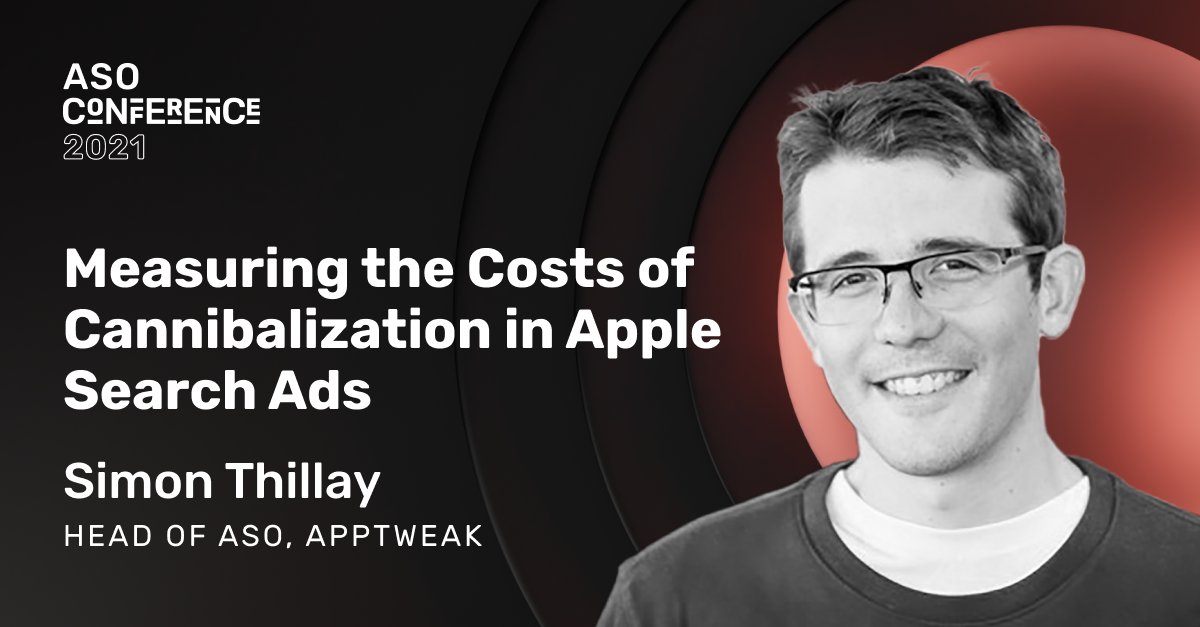 Measuring the Costs of Cannibalization in Apple Search Ads
Measuring the Costs of Cannibalization in Apple Search Ads
Simon Thillay (Head of ASO, AppTweak)
Our next speaker was Simon Thillay, AppTweak’s Head of ASO. In this talk, he presented a model to measure the true costs of cannibalization in Apple Search Ads (ASA) and inform your Search Ads strategy, especially after App Tracking Transparency (ATT) deprecation.
Simon began by defining cannibalization: Cannibalization is paying for something that you have ‘already’ secured or would have otherwise got for free. In ASA, cannibalization comes from a conversion (from impressions to downloads) when a competing app receiving the Search Ads impression would not have converted anyway, and users would have organically downloaded your app. Furthermore, defending your own branded keywords with ASA can push competitors down in search results but can also feel like paying for your ‘own’ installs.
To model the costs of cannibalization, you first need to estimate your competitors’ conversion rate (CVR) for specific keywords. From that, you should construct multiple hypotheses; reviewing your own CVR for brand defense ASA campaigns and “conquest campaigns” can help to anchor your CVR estimates. To refine your hypotheses, Simon also recommends considering your organic rankings and supplementary data.
Once you have built your CVR hypotheses, you need to calculate the number of downloads that are well-protected and the number of downloads that are cannibalized:
- Protected downloads = your impressions*competitor CVR
- Cannibalized downloads = your impressions*your CVR
From this, you can then deduce the real cost of your protected installs, accounting for your cost per install (reported by Apple).
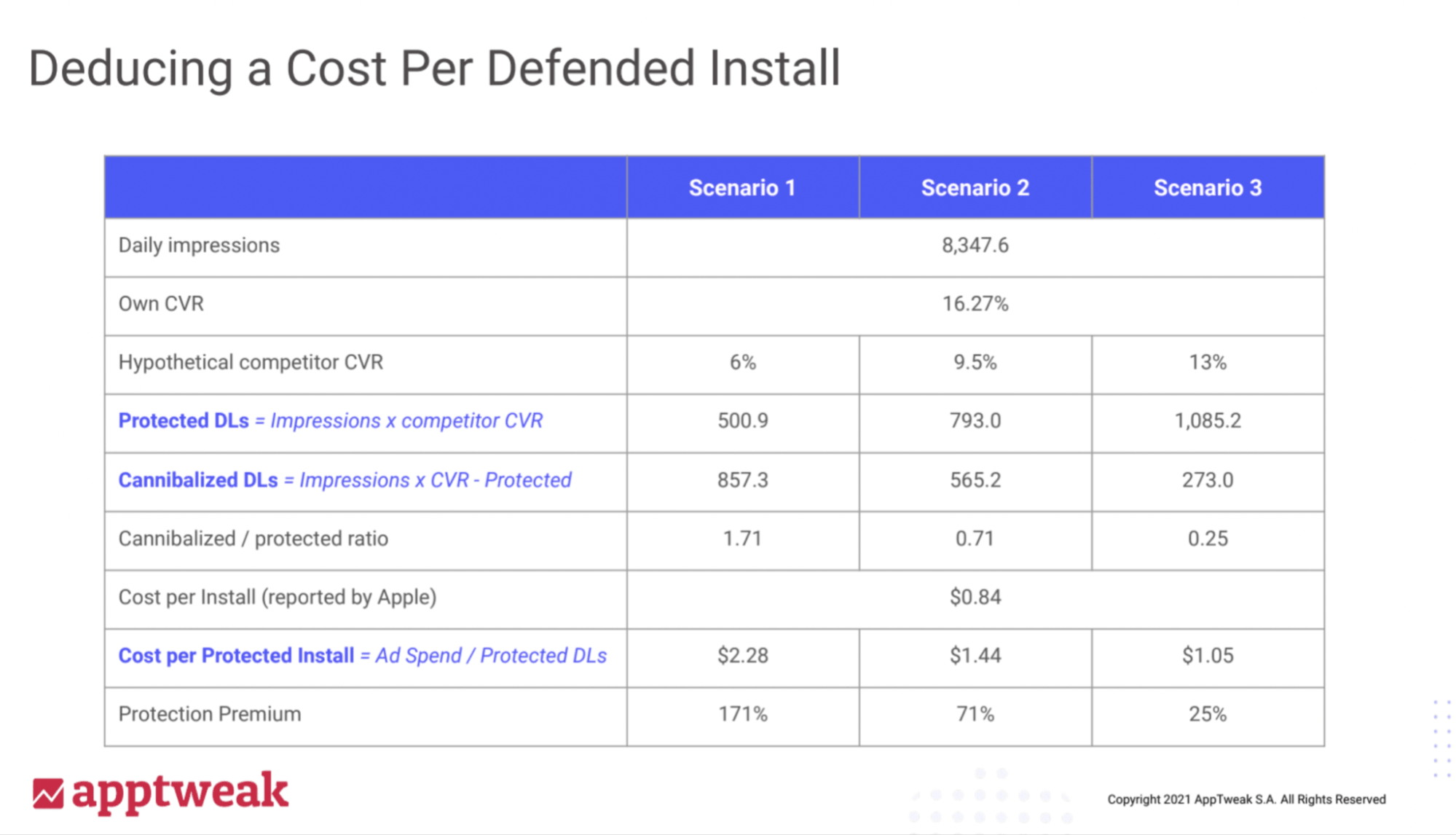
This model can also be applied to identify competitors or generic keywords that are at risk of cannibalization. The goal is to then identify an ‘acceptable’ price to pay for cannibalization based on the model (and not necessarily rule out your entire keyword defense strategy). When targeting multiple user personas, developers should leverage Search Ads Creative Sets even more to increase conversion rates and maximize efficiency.
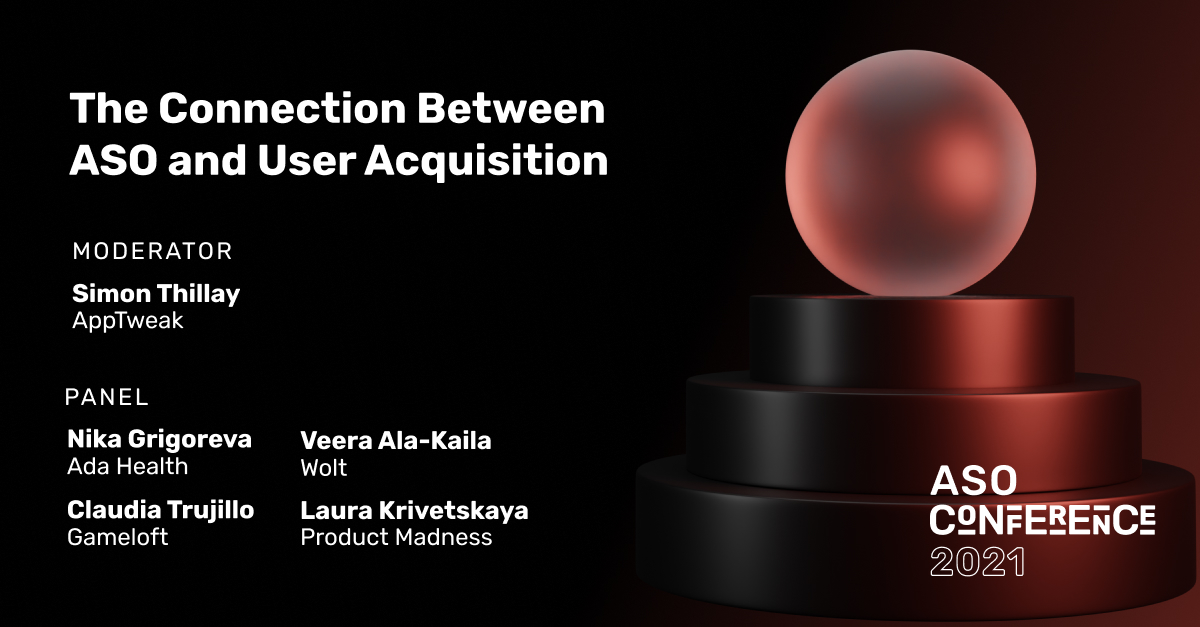 Panel: The Connection Between ASO and User Acquisition
Panel: The Connection Between ASO and User Acquisition
Simon Thillay (Head of ASO, AppTweak)
Nika Grigoreva (Performance Marketing Manager, ASO & Search; Ada Health)
Veera Ala-Kaila (Performance Marketing Lead, Wolt)
Claudia Trujillo (ASO Expert, Gameloft)
Laura Krivetskaya (ASO Manager, Product Madness)
Hosted by Simon Thillay, Head of ASO at AppTweak, the first panel discussion of the afternoon centered around the connection between ASO and user acquisition (UA). This insightful exchange aimed to help the audience create synergies between ASO and UA, maximize growth opportunities, and consider the two strategies as complementary, rather than interchangeable.
While all 4 panelists shared that their companies establish processes to ensure the alignment of ASO and paid UA, the structures in place differ. These disparities range from having one global ASO manager that coordinates with both local teams and UA managers for each app/game, to merging both paid UA and ASO roles in one single growth team.
- At Product Madness, the team organizes weekly prioritization and planning sprints to share projects and support requests around A/B tests. This is accompanied by biweekly syncs to discuss game performances and a dedicated ASA manager who facilitates the alignment of ASO strategies.
- At Wolt, this alignment involves the Brand team to ensure any projects also follow business priorities.
- At Gameloft, the team particularly focuses on employing third-party tools in its creative strategy; as a result, ads need to reflect any testing strategies employed elsewhere.
- Finally, Ada Health organizes strategy and prioritization sessions to effectively coordinate its ASO and UA efforts.
To differentiate between organic and paid performance results, data science dashboards are generally used to extrapolate the pure impact of both organic and paid growth efforts. ASO tools also serve to track organic performances at a more detailed level; the panelists therefore deemed it important to ensure the relevant data has been added to the teams’ data lakes.
When identifying the ad networks that synergize the best with ASO or that produce the most cannibalization, Apple Search Ads was agreed to be the most useful network for ASO, given the supplementary data it provides and the ability to A/B test creatives. At the same time, the nature of ASA drives some cannibalization from ASO.
- Laura (Product Madness) advised the audience to run frequent tests and switch campaigns on and off to measure cannibalization without abandoning valuable insights.
- Nika (Ada Health) recommended the exclusion of brand names in ads to avoid cannibalization and, according to Nika, Google UAC is a major source of cannibalization, which is difficult to prevent given its limited user control options.
- For games, Claudia (Gameloft) shared that Unity, Google AdMob, and IronSource can all positively impact ASO as the influx of traffic and downloads they bring can serve as signals to store algorithms.
- For apps, Vera (Wolt) expressed that Google and Facebook ads are somewhat unavoidable due to their user bases and infrastructures; however, more specific networks for different regions do exist, such as Snapchat in Nordic countries.
To manage the design process for ASO and paid UA:
- Wolt employs the same team to produce both types of creatives, with one person on the team specifically dedicated to ASO to ensure store best practices are considered.
- Both Product Madness and Gameloft begin the creative optimization process with a stakeholder meeting to explain the hypotheses and goals.
- At Ada Health, the team organizes briefing sessions to align design and copy teams, also involving an ASO manager who regularly updates a document on store guidelines.
- When considering whether insights from paid UA can apply to ASO (and vice versa), all panelists believe in the potential to transfer learnings from one practice to the other.
- Simon (AppTweak) also highlighted the importance of keyword optimization in providing valuable insights that can be applied to creatives.
When using third-party tools that require a paid UA budget to test creative assets, the panel noted it important for paid UA teams to create campaigns specifically dedicated to driving traffic to ad hoc tests. It is also essential for teams to plan the budget that can be invested and establish the threshold at which you should stop a test that has not yet reached statistical significance and for which results will probably not justify the budget spent. Nika also stressed that any test result should be strengthened with a pre- and post-analysis, instead of instantly trusting test results provided by Google Play Experiments, for example.
Finally, the panelists provided their reactions to recent ATT changes on the App Store:
- Wolt has chosen to adopt a ‘wait and see’ approach, having not seen any major changes in traffic from either paid UA or ASO.
- Product Madness has followed a similar approach, adding that they have decreased overall budgets, moved towards LAT-off (Limited Ad Tracking) campaigns, and increased ASA budgets to account for the new settings.
- Similarly, Gameloft has not reported much change and has not shifted budgets as of yet.
- Last, Ada Health is attempting to gather and measure data by investing more into ASO, despite also not reporting any major changes yet.
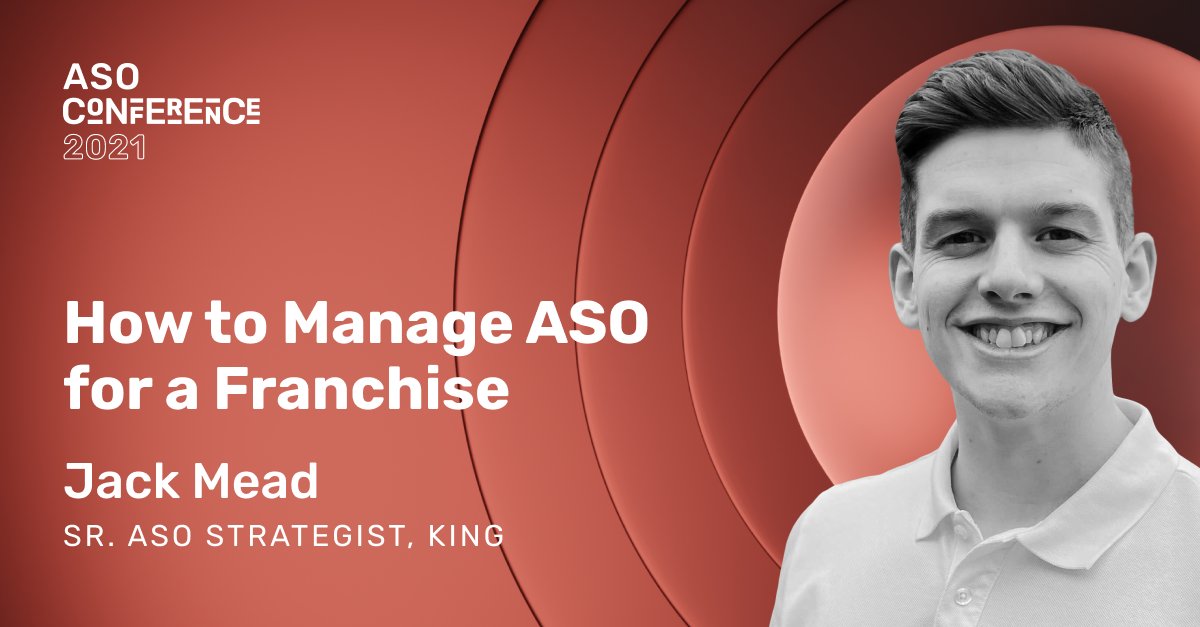 How to Manage ASO for a Franchise
How to Manage ASO for a Franchise
Jack Mead (Sr. ASO Strategist, King)
Presentation
Next, Jack Mead from King shared a 4-step guide to achieving unique goals across multiple apps. He highlighted best practices to reach targets when managing a portfolio of apps, and discussed some quick wins in time management and testing strategies. Jack’s 4 key steps to successfully managing a franchise were:
- Take stock
- Research
- Outline the strategy
- Prioritize and execute the strategy
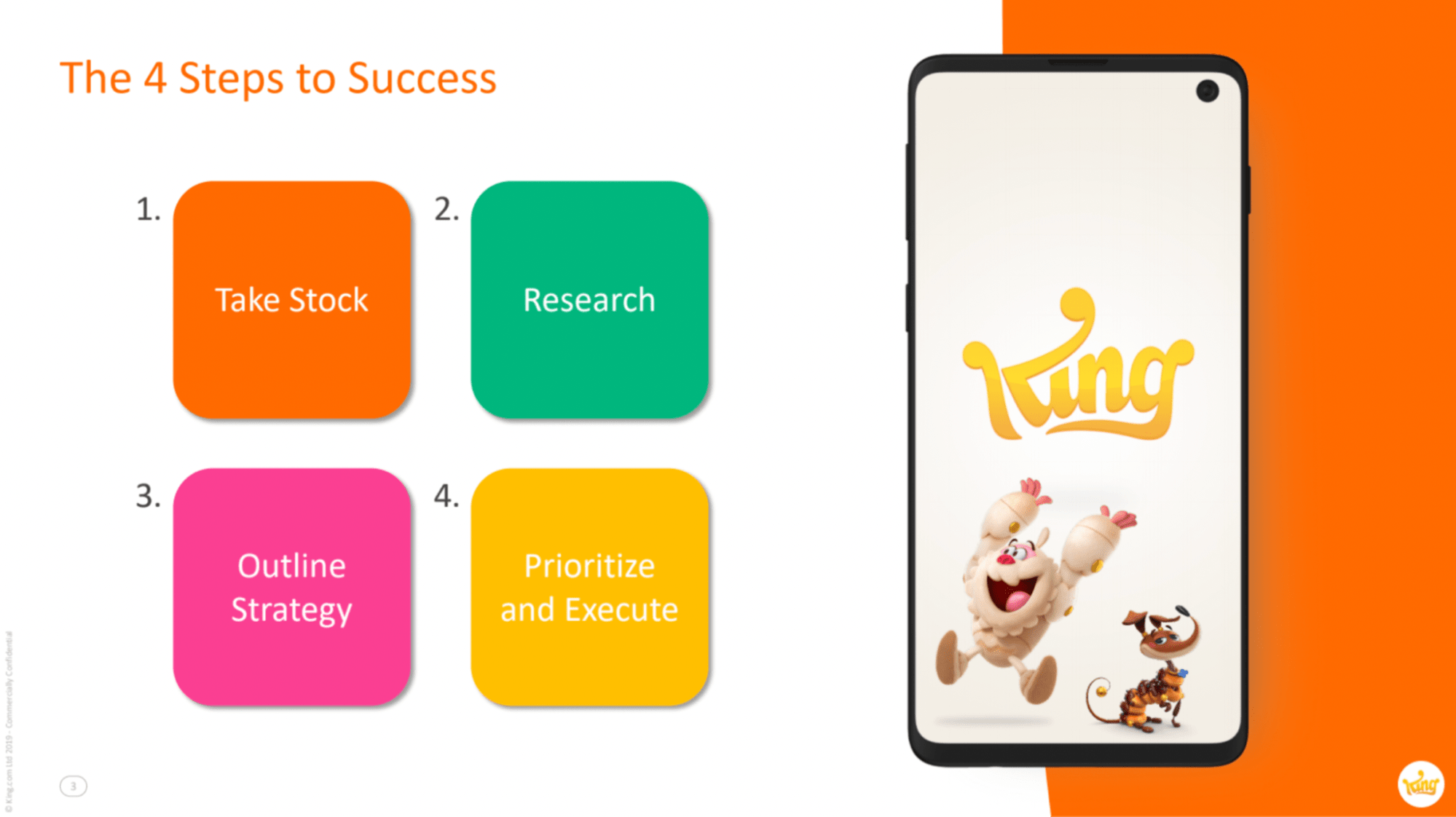
The process begins with taking stock due to the complexitites of equal resource allocation for each app or game when managing a complete franchise. As a result, it is crucial to evaluate each game’s positionings to provide the most resources to the app with the most potential. This is done with a performance review (inward focus), alongside an analysis of the competition to identify the biggest markets. It is also important to consider the resource split; for example, for large franchises, it is impossible to focus on every app title at once. You should therefore assess whether unprioritized titles have been allocated enough resources to grow anyway. When shifting priorities and returning to games that have been left aside for some time, you should also start by reviewing best practices and identifying any quick wins.
After this first step, you should next conduct research to refine the focus of any tests. This research does not have to be specific to the stores – apps and games may also want to consider wider market trends that can be leveraged in marketing or within the product.
The next step is to outline the strategy – here, you should identify important KPIs and set specific goals to improve performances from quarter to quarter before selecting the most achievable figures to reach for. Finally, Jack advised the audience to take time for the execution phase as results will eventually arrive, but perhaps not immediately.
Moving on to creative optimization, Jack recommends not optimizing outdated store pages. If a page misrepresents the app or game’s current functionality, you should first focus on updating your creatives and other elements, as users will only respond well to accurate store listings. Therefore, optimization efforts should only happen after a solid baseline has been established – if not, you may just produce poor results.
Once the creative optimization process has begun, there are several related factors to account for: You should research industry trends and identify those that can be transferred to and leveraged by your app/game; at the same time, you should continuously consider how your app can stand out and look unique. A great way to do this and avoid tunnel vision is by recruiting outsiders and giving new ideas a chance.
When managing ASO for a franchise and focusing on organic search, app titles should work together, despite not necessarily following the same strategies. At the same time, creatives should also rely on recycled tests across offerings. For example, Jack shared a creative optimization success story for a game in the Candy Crush franchise: This particular test saw positive user reactions to groupings of 3 characters and from this, the test was also successfully transferred to the Farm Heroes saga (after some tailoring).
Last, Jack considered the challenges that can arise in timeline management. His advice was to consider how assets can be repurposed across acquisition funnels to help maintain a high testing rhythm and free up resources, while also making sure to clearly communicate timelines to all stakeholders.
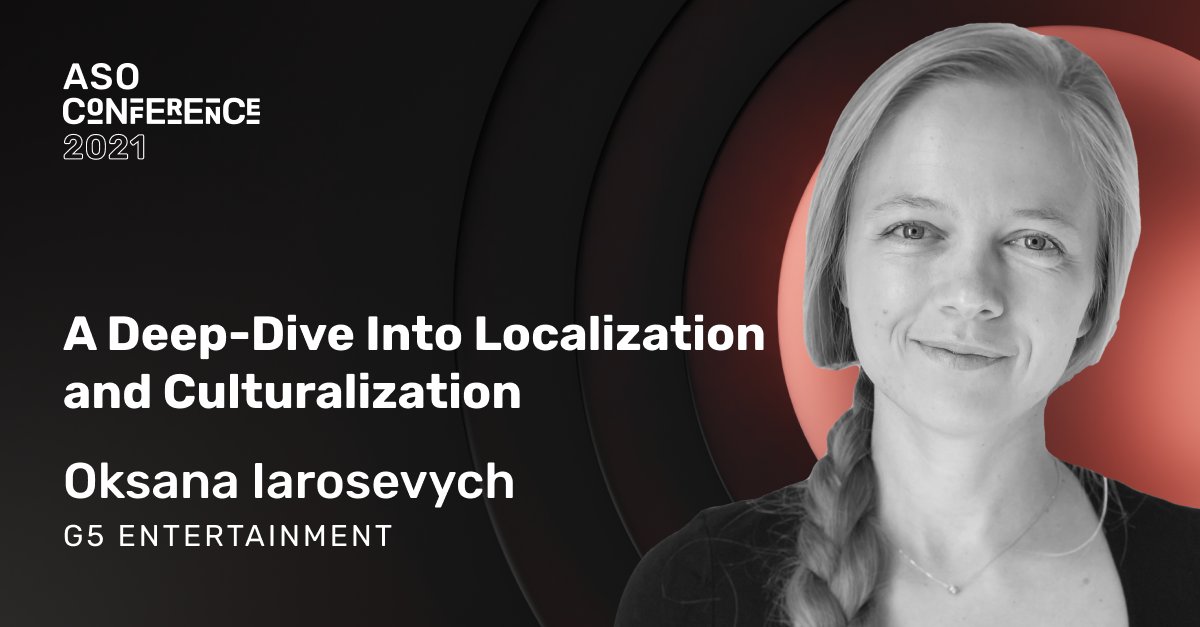 A Deep-Dive into Localization and Culturalization
A Deep-Dive into Localization and Culturalization
Oksana Iarosevych (ASO Team Lead, G5 Entertainment)
During this next talk, Oksana Iarosevych shared her do’s and don’ts in localization and culturalization for app icons, screenshots, and keywords across major countries like Japan, Russia, Australia, and more.
Having researched localization trends across app categories, Oksana found that Strategy games are generally localized the most often, while Music apps are localized the least (on both iOS and Android). She also identified Japan, France, and Russia as the 3 countries where localization is practiced the most. This localization goes beyond the simple translation of metadata; app developers also use specific formatting standards across countries, such as colored text (via enriched HTML formatting) in Japan or caps lock in Russia.
When diving into keyword optimization, G5 Entertainment believes that semantic cores are never universal and keyword research always needs to be localized. The same issue applies to conversion for both text and creatives, which is why G5 has established a ‘transcreation’ process, requiring a native speaker and an ASO expert to work in close collaboration.
When localizing creatives and going further than just translating keywords, fewer games in the top 100 of each store (US) actually make the effort, probably due to the increased amount of resources required to achieve results.
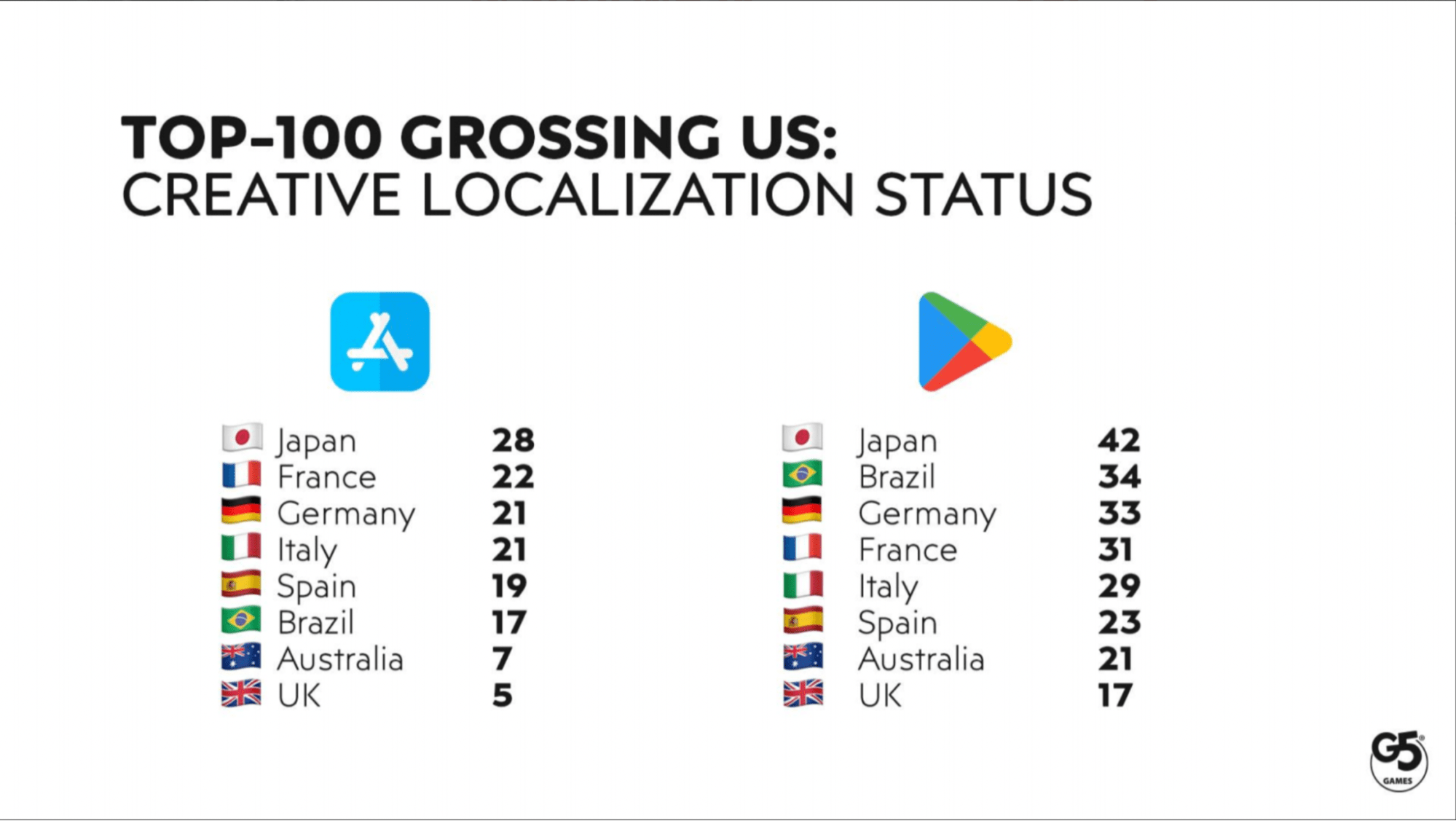
For its own process, G5 Entertainment first produces a sizable backlog of experiment ideas that can be used globally, before syncing with local teams to refine the tests that would be relevant for each geographical region. After this, the team begins testing, analyzing results, and reviewing the successes that could then be scaled.
Oksana also shared some localization don’ts: First, you should avoid ‘overlocalization’ fails (when localized creatives increase the risk of users finding the creative misleading). For example, a creative might rely on a popular character that is unavailable for players in the early levels of a game. In this case, you should remember to check data for both first-time installers and retained installers in Google Play Experiments.
You should also be sure to connect with local teams to ensure domestic audiences won’t feel that localized assets rely on or reinforce stereotypes and that they account for local traditions, international social trends, and geopolitics.
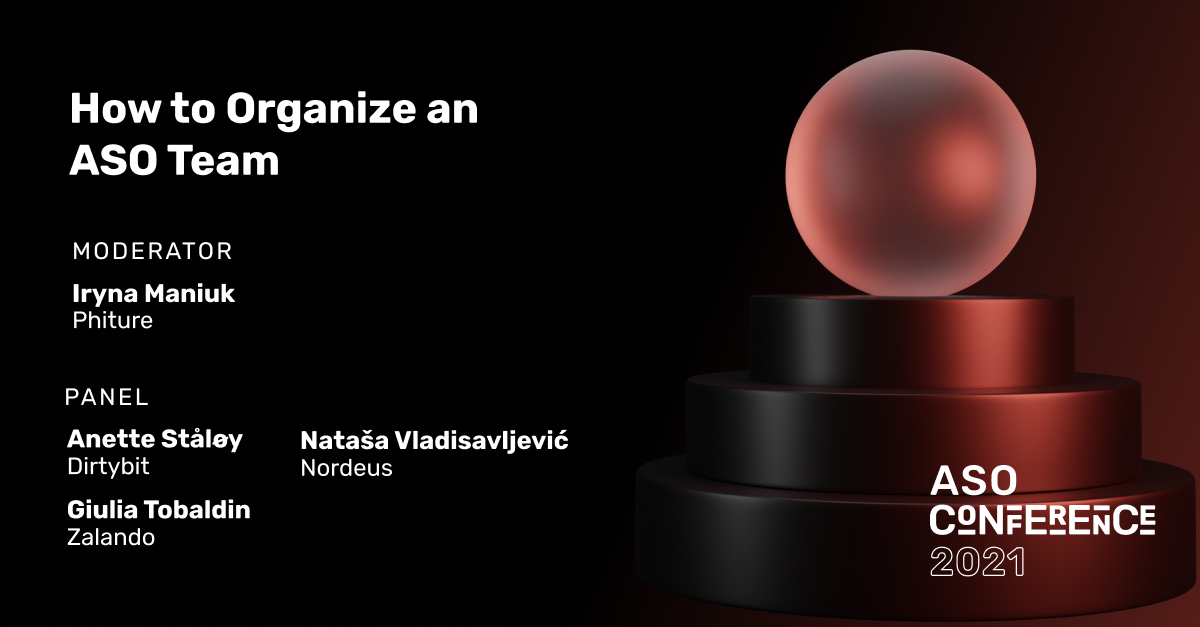 Panel: How to Organize an ASO Team
Panel: How to Organize an ASO Team
Iryna Maniuk (ASO Consultant, Phiture)
Anette Ståløy (Chief Marketing Officer, Dirtybit)
Nataša Vladisavljević (Marketing Specialist, Nordeus)
Giulia Tobaldin (ASO Manager, Zalando)
The second panel of the day was hosted by Iryna Maniuk, ASO Consultant at Phiture. It brought together industry experts to discuss how they structure ASO within their companies to enhance organic strategies.
All 3 panelists shared their respective ASO team structures, with Nordeus having one dedicated ASO manager and Zalando having two. On the other hand, Dirtybit involves 3 different people in specific ASO projects but only as a part-time responsibility, as this structure better fits the company’s smaller size. Between all 3 panelists, the common denominator was the collaboration between multiple teams in both product and marketing, with ASO linking the two.
Specifically looking at the coordination of ASO teams:
- Nataša (Nordeus) began by stressing the importance of regular syncs with both product and marketing teams to discuss upcoming projects and ensure everyone is aligned before anything goes live.
- Anette (Dirtybit) added that, in the case of goal-oriented structures, communication tools such as Slack and Trello are extremely useful to keep track of tasks. Furthermore, it is also important to educate the rest of the company about ASO.
- Giulia (Zalando) confirmed that their team favors detailed bi-weekly syncs between paid UA and content marketing teams. Otherwise, the team employs weekly catch-ups and also takes the time to sync with design teams for special marketing projects.
As teams take on a variety of tasks in ASO, Giulia explained that Zalando has ASO managers that specialize in both keyword optimization and creative optimization. Again, tools are key to keep track of tasks, as reminded by Irina (Phiture) who stressed that virtual board systems are becoming increasingly common as teams organize and coordinate with multiple internal stakeholders. Nataša underlined that such tools should also be used to keep track of past learnings and decision processes.
Everyone agreed that it is essential for ASO team members to be curious, adept at data handling, and able to educate others about the value of ASO, especially when impact cannot be immediately or directly measured. Furthermore, companies should learn quickly, be open to risk-taking, and be understanding of mistakes.
Finally, the panel shared a series of useful tips:
- Anette (Dirtybit) stressed the importance of always having hypotheses when making any changes and keeping a record of them.
- Giulia (Zalando) insisted that every stakeholder should be informed of any hypothesis or changes you are trying to make.
- Nataša (Nordeus) added that ASO teams should keep an internal backlog of changes and relevant KPIs that may be affected.
- All 3 panelists agreed that any ASO managers – new or experienced – should not be afraid to fail and should instead see ASO within its bigger picture. For the panelists, this also demonstrates why ASO is a great field to expand knowledge around products, user acquisition, creatives, and more.
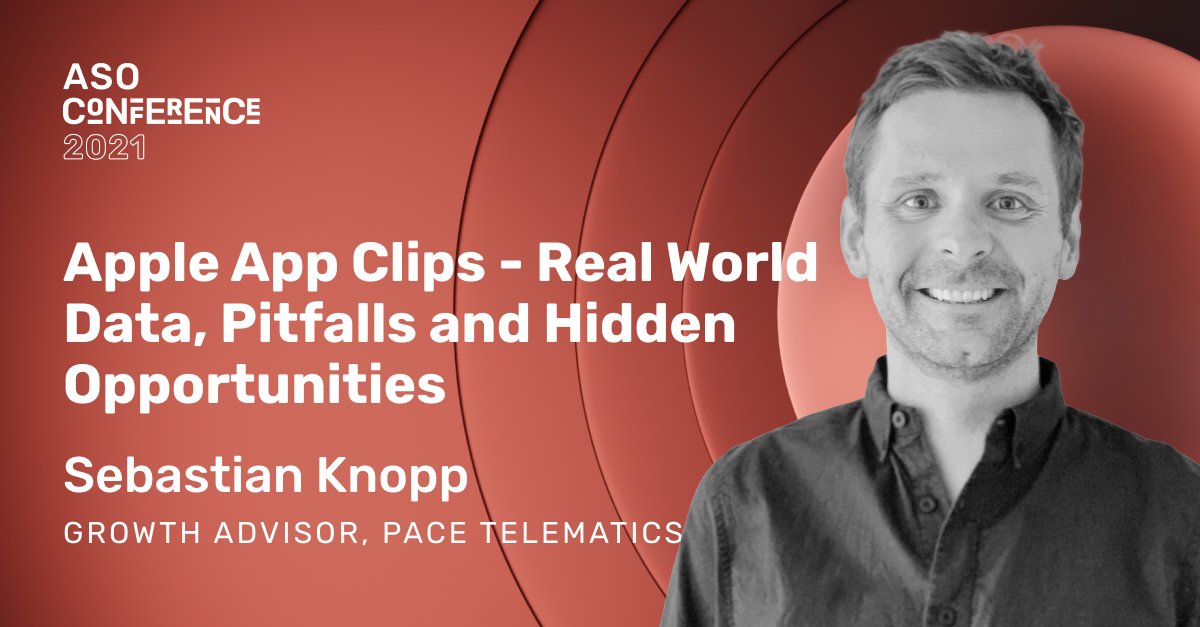 Apple App Clips – Real World Data, Pitfalls and Hidden Opportunities
Apple App Clips – Real World Data, Pitfalls and Hidden Opportunities
Sebastian Knopp (Growth Advisor, PACE Telematics)
The penultimate talk of the day came from Sebastian Knopp, Growth Advisor at PACE Telematics, and was aimed towards those who wanted to get up to speed with Apple App Clips.
Sebastian started by reminding the audience about what App Clips are – they are a relatively new functionality on Apple meant to enable discovery and actions from outside the App Store, working similarly to Google Instant Apps but instead being triggered outside the store (and never in the App Store).
In terms of user flow, App Clips are initially triggered by invocations, with the most common example being QR codes, alongside Safari website banners, NFC tags, iMessage links, or cards in Apple Maps. Once the invocation has been triggered, an App Clip card appears, almost acting as a mini store listing with a banner image, title, subtitle, customizable CTA, and list of permissions. Guidelines for this metadata differ from in the store; Sebastian considers the image as the most important element of producing a seamless, trustworthy App Clips experience.
When an App Clip is opened, developers can immediately receive two benefits:
- First, they are allowed to send the device push notifications for the following 8 hours.
- Second, if the trigger was dependent on the user’s location, developers can indirectly understand consumers’ geographical positioning (although they are unable to directly access users’ specific locations).
Furthermore, while App Clips are limited to 10MB in size, it is possible to tailor the app experience to user personas. App Clips also stay on a user’s device if they want to use them again, and any data or permissions granted to the App Clip can be carried over to the app if the user then downloads it. Finally, developers can display an overlay banner to nudge users to download the app without having to go to the App Store to do so.
Sharing the experience of PACE Drive, an app that helps users pay at gas stations without having to go up to the counter, Sebastian highlighted that 23% of users that engaged with an invocation and saw the card actually launched the App Clips experience. He also reported an average of 4 sessions made in the Clip. Such data demonstrates the team’s successful experience with App Clips to capitalize on a ‘wow’ factor, facilitate payments and boost the adoption of the app without needing to provide a full tutorial.
Sebastian shared other use cases, including how Sign Easy uses App Clips to help consumers digitally sign contracts in emails or iMessage, or how ChibiStudio gives users a taste of building an avatar before nudging them to install. He also described Firi Games’ use of App Clips to provide players with an experience of its Phoenix 2 game before inviting them to download it.

Overall, Sebastian concluded that App Clips have the potential to change real-world acquisition – for example, locations such as bus stops could be leveraged with QR codes – and lower the costs of ‘test drives’ for users.
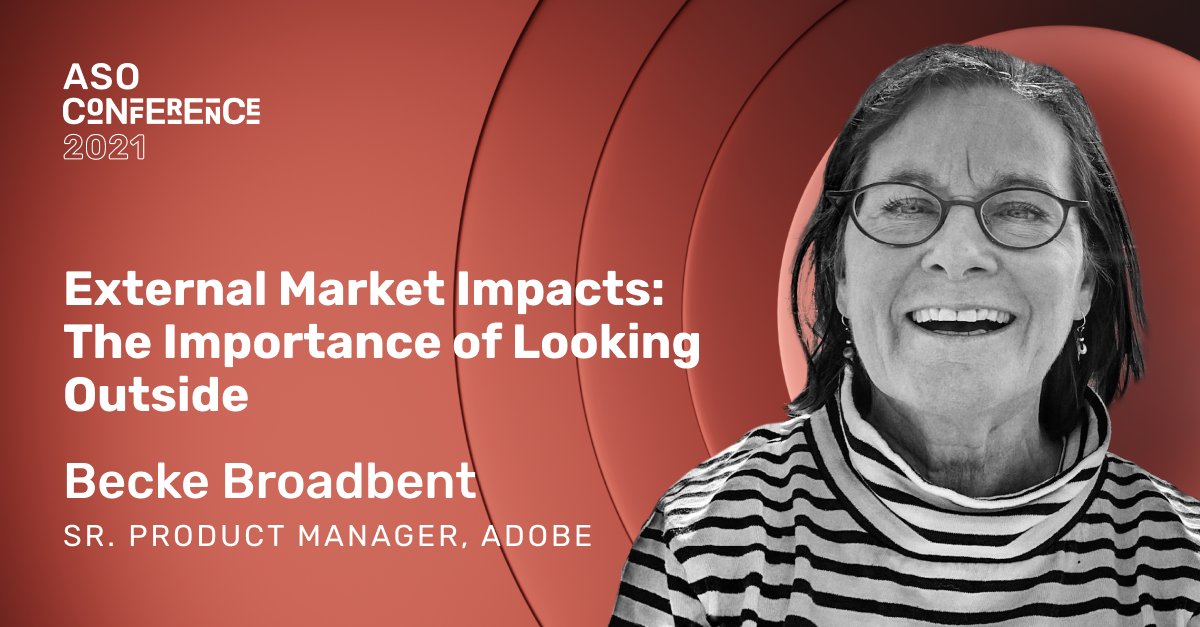 External Market Impacts – The Importance of Looking Outside
External Market Impacts – The Importance of Looking Outside
Becke Broadbent (Senior Product Manager, App Store Optimization; Adobe)
Our last talk of the day was from Becke Broadbent, Senior Product Manager at Adobe. She described how Adobe proactively adjusted to the COVID-19 pandemic, local government boycotts and executive orders, and viral social media events that moved the needle.
Since starting ASO in 2018, Adobe has seen seasonal events, politics, competitor activities, and world events affect its apps’ performances. The COVID-19 pandemic was one of the largest scale events: The team saw download surges for multiple apps in different countries, alongside losses for other apps, such as Lightroom, which dropped in category rankings in the Photo/Video category. Throughout 2020, an essential part of Adobe’s strategy was to use trends established in countries hit first by COVID to anticipate what would come next in other countries. This helped Adobe to not only “ride the zoom wave” and benefit from the massive adoption of the conferencing app to boost its apps’ visibilities, but also to learn how to adapt marketing messages inside and outside the stores. For instance, Adobe rolled back its ‘Like a Boss’ campaign, instead adopting a warmer approach and focusing more on the ‘stay at home’ lifestyle.
In France, COVID regulations required people to carry authorization forms outside or when commuting around the country. This led to very specific download increases for Adobe Scan and Adobe PDF, as both apps helped French consumers scan and digitally sign documents, thus avoiding the fine they would have received if they were unable to present the signed form. Adobe was only able to understand this event after connecting with its local team in France.
Monitoring specific keyword volumes helped Adobe adjust its keyword optimization strategy in each market. Beyond this, working with Phiture’s data science team to build data studio dashboards and combine App Store, ASO, and market intelligence data helped Adobe to leverage ASA in each market.

Besides COVID-19, other events can also impact ASO. This was seen when India banned CamScanner (a Chinese app), allowing Adobe to capitalize on this event. A similar situation was also presented when then-President Donald Trump threatened to ban multiple Chinese apps from the States, encouraging publications to publish content providing alternatives.
Internet trends also help to boost Adobe’s downloads; for example, a viral meme of Bernie Sanders at the presidential inauguration led to a sudden increase in downloads for Photoshop in January 2021.
We hope you enjoyed the ASO Conference 2021 as much as we did; it’d be great to hear your feedback! From both AppTweak and Phiture, we’d like to say a massive thank you to everyone who participated in making the event a success. See you next year!
About AppTweak
AppTweak is the leading ASO tool driven by data science. AppTweak empowers mobile leaders – such as Amazon, Jam City, Yelp and Adobe – to grow their apps and games with actionable insights in a simple interface.
Committed to developing the most accurate, transparent and easy-to-use ASO tool on the market, AppTweak supports over 1,500 app developers and game publishers worldwide. AppTweak’s all-in-one platform offers ASO Intelligence, Ad Intelligence, App Intelligence and Market Intelligence.
AppTweak has been awarded the “Best ASO Tool” by the App Growth Awards community and was recognized as the 6th Fastest-Growing Technology Company in Deloitte Belgium’s Fast 50 competition. Launched in 2014, AppTweak serves customers from all corners of the world, with offices in Brussels, San Francisco, Tokyo and Bengaluru.
About Phiture
Phiture is a multi-award-winning mobile growth consultancy and agency working with the teams behind leading apps. Using the company’s industry-acclaimed Mobile Growth Stack as a strategic framework, Phiture team offers 5 key services: App Store Optimization, Performance Marketing, User Retention/CRM, Subscription Revenue Optimization services and Growth Consulting.
Table of Contents












